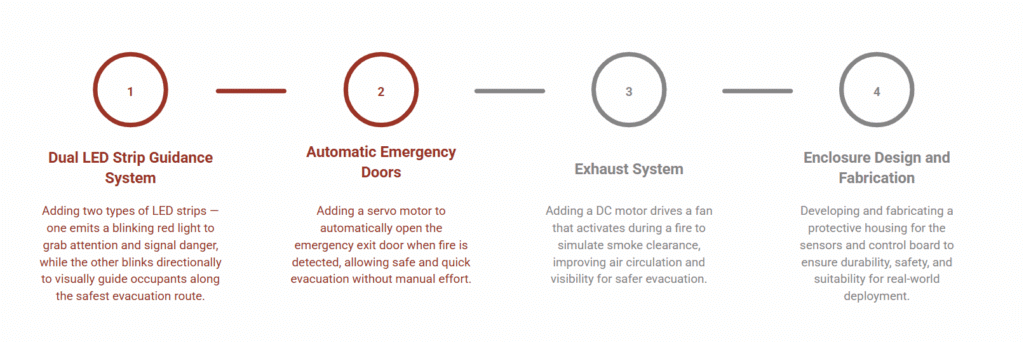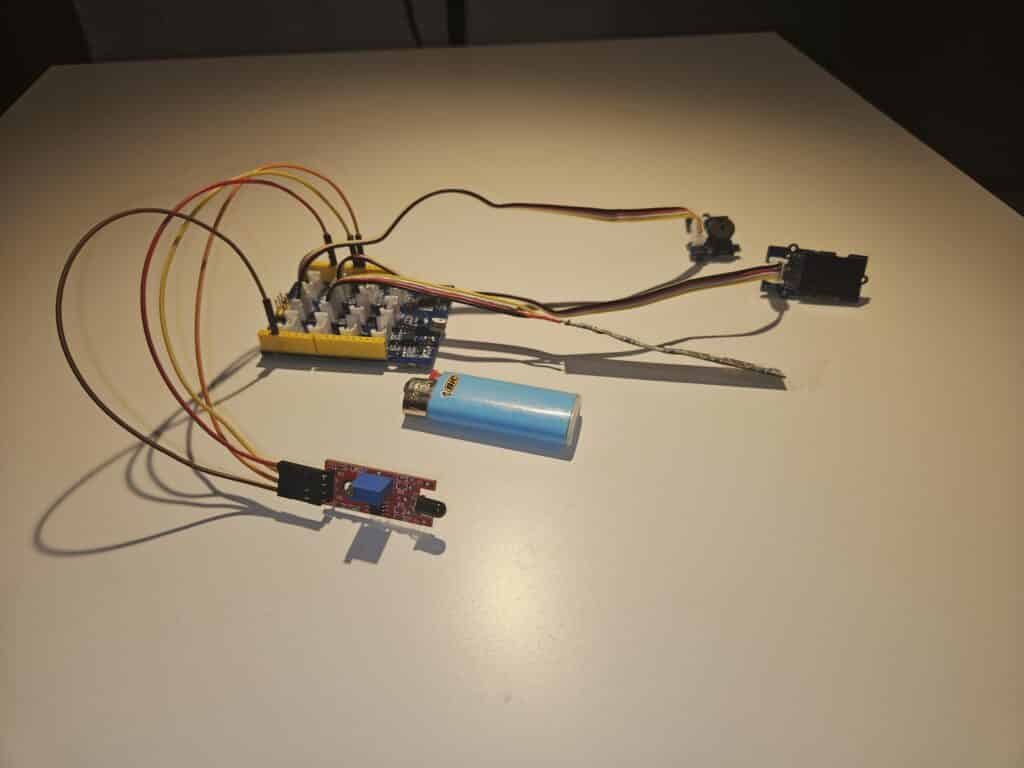
CONCEPT
The project aims to create an intuitive, self-directing fire alert system using Arduino that not only detects fire but also guides people safely toward the nearest escape route.
When a flame is detected, the system activates visual cues and audible alerts (buzzer) while displaying warning messages on the OLED screen.
The system combines sensor detection, lighting, and alert mechanisms to simulate how technology can make emergency responses faster, safer, and more human-centered.
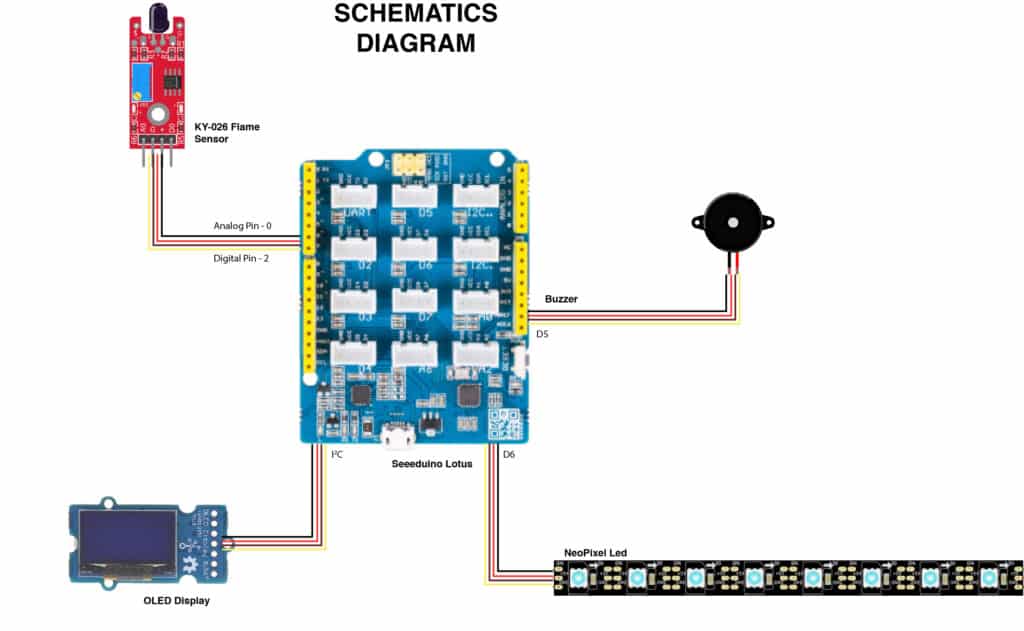
This schematic diagram shows how all components of the fire alert system are connected to the Arduino board. The flame sensor serves as the input device that detects fire, while the buzzer, LEDs, and OLED display act as output components that provide sound, light, and visual alerts.
Arduino code

PROTOTYPE
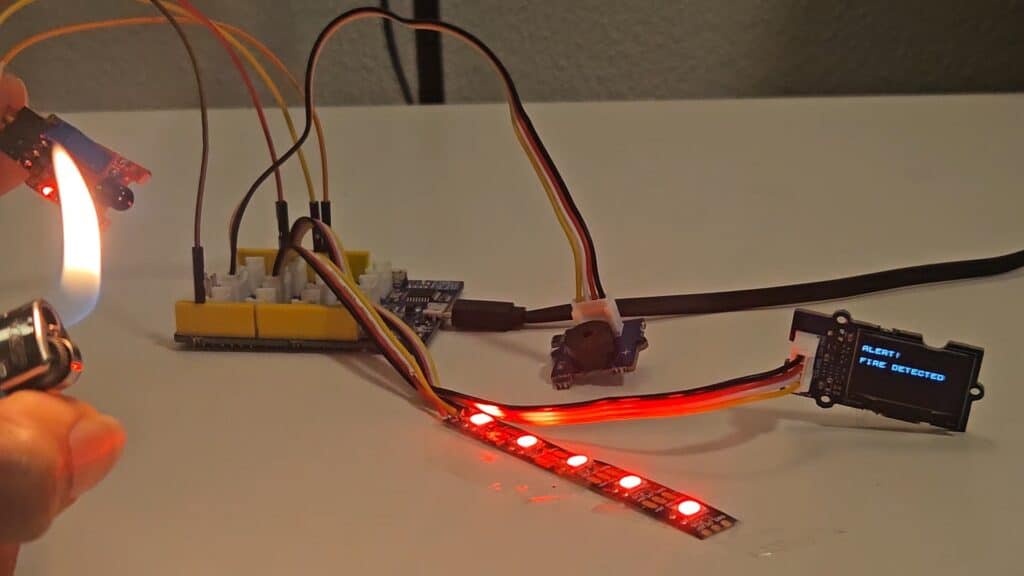
The concept behind the functioning of the prototype is to create a self-directing, multi-sensory fire alert system that detects fire in real time and immediately guides people to safety. The system combines sensing, processing, and response — the flame sensor identifies danger, the Arduino processes this data, and multiple outputs (LEDs, buzzer, and OLED display) work together to deliver clear visual and audible alerts.
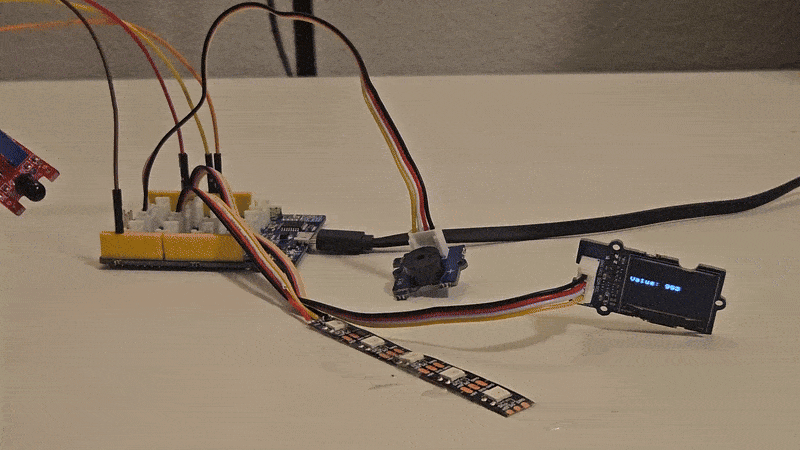
Operation sequence:
System boots → OLED displays “System Ready.”
When flame detected (sensor reading < threshold):
Buzzer sounds continuously (analogWrite(buzzer, 255)),
NeoPixel LEDs flash and breathe in red,
OLED displays “ALERT: FIRE DETECTED”,
Serial monitor prints detection message.
When flame disappears:
All outputs stop, OLED shows “No Fire Detected.”
NEXT STEPS
